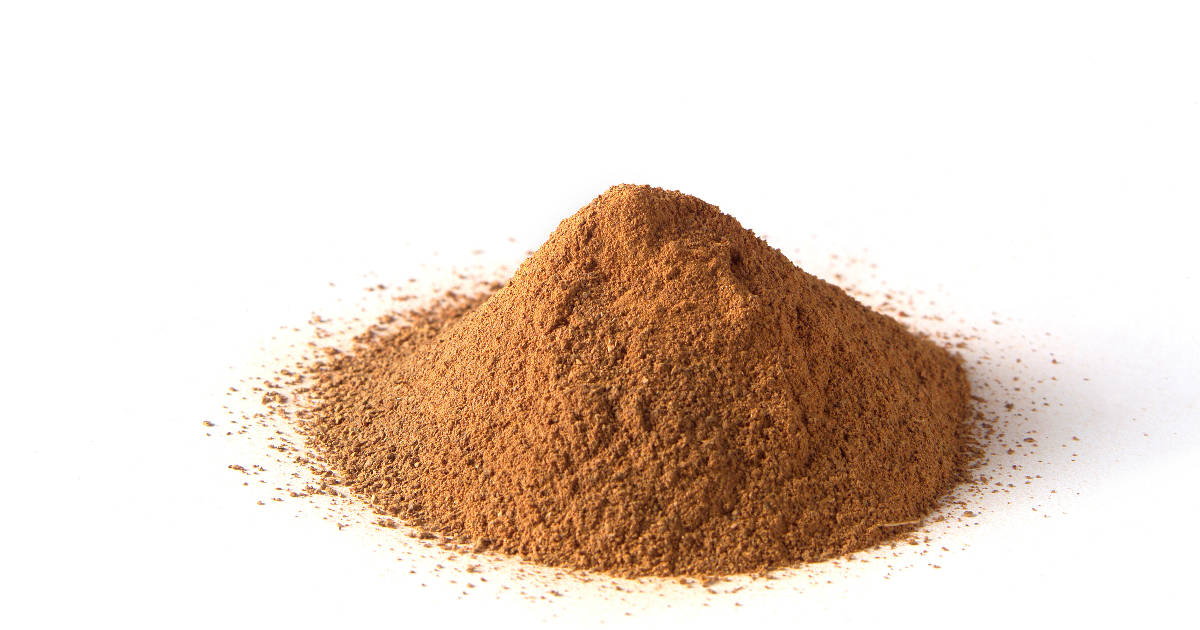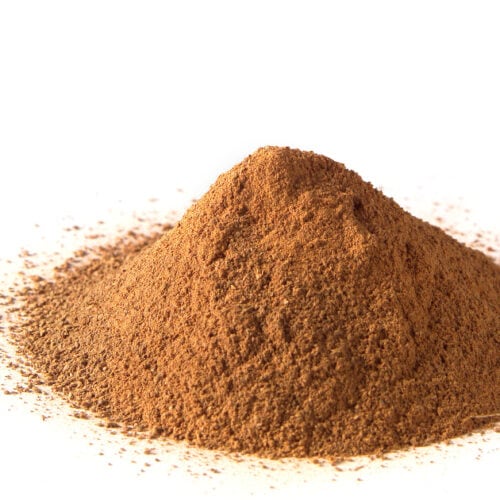Five spice powder (五香粉) is an iconic spice blend used extensively in Chinese and Taiwanese cuisine.

As the name suggests, it contains 5 core spices specifically chosen to hit each of the 5 basic taste senses - sweet, sour, bitter, salty and umami.
History and Origins of 5 Spice Powder
The principles behind 5 spice powder formulation trace back thousands of years in Chinese medicine and philosophy. The 5 spices were chosen to represent the 5 elements (wood, fire, earth, metal, water), which in turn correspond to the 5 tastes (sour, bitter, sweet, pungent and salty).
According to traditional Chinese medicine, imbalance in any of the 5 elements can lead to illness, so herbs and spices are used therapeutically to restore balance. The blend evolved over centuries into the seasoning we recognize today as the backbone of so many Chinese spice rubs, marinades and stir fries.
While formulations vary across China's different regions, the goal is always a harmonious blend of contrasts - the warmth of cinnamon and clove, the sweet licorice of fennel and star anise, the gentle bitterness of cloves, the bright citrus tones of Sichuan peppercorns. Used judiciously, this balancing act seasons without overpowering.
Key Takeaway: 5 spice powder formulation is based on the 5 elements - wood, fire, earth, metal and water - that correspond to the 5 basic tastes. The spices are blended to balance all 5 for therapeutic effects.
Common 5 Spice Powder Ingredients
As mentioned above, 5 spice powder recipes center on 5 core spices chosen for their contrasting and complementary flavor profiles. Which ingredients are used can vary slightly by regional traditions, but here are the most common:
Star Anise
The star-shaped pods add a sweet, licorice-like flavor reminiscent of fennel. Their intensity must be balanced carefully in 5 spice powder recipes to prevent overpowering the other ingredients.
Fennel Seeds
Another ingredient adding sweet, gently licorice notes. Fennel seeds have an aroma and flavor less pronounced than star anise, making it an important partnering agent.
Sichuan Peppercorns
Though referred to as a peppercorn, this ingredient is unrelated to black or white pepper. The outer husks contain aromatic, citrusy oils that create a tingling, buzzing sensation on the tongue. This effect along with the lemony flavor makes Sichuan peppercorns an excellent palate-awakening contrast to the other spices.
Cloves
The small dried flower buds punch above their weight when it comes to strongly pungent, bitter, almost astringent flavor. Cloves are incredibly potent and must be used sparingly in 5 spice powder so their bitterness doesn't overwhelm.
Cassia or Chinese Cinnamon
Cassia has a stronger, more pungent flavor compared to Ceylon cinnamon. Its sweet warmth balances the bitterness of cloves and bright citrus of Sichuan peppercorns.
Some recipes also call for supplements like ginger, white pepper or sand ginger, but the core profile highlights those 5 taste senses.
How to Make Homemade 5 Spice Powder
Making your own 5 spice powder allows you to control the freshness and quality of the ingredients, as well as tailor the blend to suit your personal tastes.
With whole spices and a blender, mortar and pestle or spice grinder, you can easily grind everything into a fine powder ready for all your Chinese recipes.
| Spice | Whole Form | Ground Form |
|---|---|---|
| Star Anise | 4 whole pods | 1 Tbsp |
| Fennel Seeds | 2 Tbsp | 2 Tbsp |
| Sichuan Peppercorns | 1 Tbsp | 1 Tbsp |
| Cloves | 1 tsp whole | 1 tsp |
| Cassia Cinnamon | 1-2 sticks | 1 Tbsp |
No matter which form you use, try to source high quality spices for full flavor dimension. With an airtight container in a cool, dark place, the powder will retain optimal aroma and potency for 6 months.
Storage Tips
Exposure to light, heat and oxygen slowly degrade dried spices over time. Follow these storage guidelines to preserve your homemade blend:
- Store in an airtight container in a cool, dark place
- Keep away from direct light or heat sources like stovetops
- Use within 3-6 months for best flavor
- Smell and taste test occasionally - dispose at first noticeable decline in vibrancy
Proper storage helps retain the aromatic essential oils and complex flavor notes that can dissipate over time with improper storage.
How to Use 5 Spice Powder
This versatile Chinese seasoning can spike flavor in everything from hearty stews to weeknight stir fries. Follow these tips for usage:
- Use sparingly - a little goes a long way due to intense flavor
- Add early in cooking process to bloom spices fully
- Rub on meat before roasting or grilling to form flavorful crust
- Season stir fry sauce mixtures or noodle broths
- Complement warm spices like ginger, orange, star anise
- Pair with chicken, pork, turkey or tempeh
Some classic Chinese recipes to try it in:
- Char Siu - Sweet roasted BBQ pork
- 5 Spice Chicken - Soy-glazed chicken
- Peking Duck - Roasted duck with crepes
- Lion's Head Meatballs - Herby pork & shrimp
The anise, cinnamon and clove also complement non-Asian dishes like roast turkey, ballpark hotdogs and oven-baked bean dips. Get creative with this versatile umami bomb!
5 Spice Powder Recipe Variations
Regional Chinese variations on 5 spice powder include:
- Southern China - Often contains Saigon cinnamon and orange peel rather than cassia and cloves
- Shandong province - Uses Chinese cardamom and amomum seed rather than fennel
Some families also add supplemental elements like:
- Sand ginger
- Galangal
- Fresh ginger
- Long pepper
- Sichuan peppercorn leaves
- Cloves
- Nutmeg
So feel free to improvise based on the specific flavor profile you wish to create!
Key Takeaway: Regional 5 spice powder recipes vary, often substituting ingredients like Saigon cinnamon, orange peel, cardamom and sand ginger. Feel free to improvise with supplemental spices to create your own custom blend!
5 Spice Powder vs. Garam Masala
Garam masala is another blend of warm, aromatic spices used extensively in Indian cuisine, like 5 spice powder in Chinese cooking. While both contain cinnamon, cloves and peppercorns, garam masala:
- Has no anise/fennel or Sichuan peppercorns
- Uses black peppercorns rather than Sichuan
- Typically contains around 10 spices vs 5
- Adds spices like cumin, coriander, cardamom and bay leaf
So they share similar principles as warming, layered spice blends, but the ingredients and flavor profiles differ based on regional cuisines. Both are excellent seasoning workhorses in their respective Asian cuisines!

5 Spice Powder Recipe
Ingredients
- 2 Tbsp fennel seeds
- 1 Tbsp Sichuan peppercorns
- 1 Tbsp Chinese cassia cinnamon powder
- 1 tsp whole cloves
- 4 whole star anise (equivalent to 1 Tbsp ground)
Instructions
- Gather all spices and lightly toast any whole spices in a dry pan for 1-2 minutes until fragrant. Take care not to burn them.
- Add the toasted whole spices along with ground cinnamon and fennel powder to a mortar and pestle, spice grinder, or small blender. Grind into a fine powder.
- Sift the powder through a fine mesh strainer to remove any large pieces and ensure a uniform powder.
- Transfer your homemade 5 spice powder into an airtight container away from heat, light and moisture. Use within 6 months for optimal freshness and flavor.
FAQs
Is 5 spice powder spicy?
Despite the name, 5 spice powder is not considered a spicy seasoning blend. However, some recipes incorporate dried chilies or Sichuan peppercorns, which add mild heat or tingling sensation. Used alone, the blend highlights sweet warm spices rather than heat.
What does 5 spice powder taste like?
It has a highly aromatic, complex flavor layering anise/licorice notes, cinnamon sweetness, peppery citrus and cloves. The overall effect is sweet and savory with warming, mouthwatering aroma.
Can I use Chinese 5 spice powder in non-Asian recipes?
Absolutely! The anise punch pairs excellently with bold flavors like barbecue sauce, ketchup based dips and warm American classics like baked beans, hot dogs and meatloaf. Use sparingly at first in rubs and marinades until you determine correct balance.
What's the best way to substitute star anise?
If you lack whole star anise pods, the best substitute is pure anise extract, using 1/2 tsp per every whole pod called for. Ground anise seeds can also work, using about 1/2 tsp for every pod. Fennel has similar flavor but won't fully mimic intense star anise.
Conclusion
Homemade Chinese 5 spice powder only requires 5 core ingredients and 10 minutes to yield an ultra-aromatic blend that forms the backbone of numerous regional recipes.
Toast whole spices lightly to bloom essential oils, then grind into a fine powder along with supplemental ground spices. Store in an airtight, light-proof container for 3-6 months of optimal freshness.

